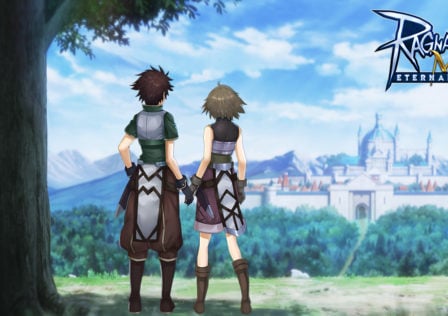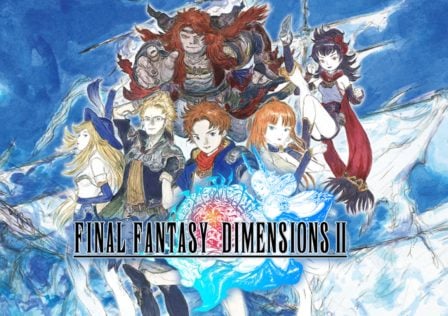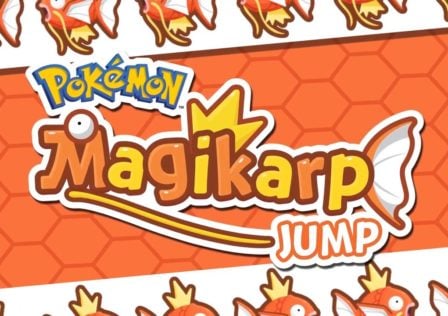Pascal Bestebroer has been making video games for a while now. You may know him as OrangePixel, the developer behind many of the cool retro style games you’ve probably played on your Android device. You know his games, now you get to know him as well.
The Beginning
“The official date is January 2005,” Bestebroer says about starting OrangePixel “I’m the only full-time Orangepixel guy, but Aline (his girlfriend) does some inbox, social media, and support handling now and then to relieve me from some tasks. And of course I work a lot with Gavin Harrison for the awesome music!”
His latest game, Heroes of Loot, was initially a product of #1Gam (which means “One Game a Month”)prototype that has since been spun-off in to a full-blown release, which is slated for a May/June release.
Pascal Bestebroer, an independent Dutch game developer, has been making video games for around 9 years. He started his company, OrangePixel, in 2005 initially making games for Java devices. After the smartphone boom, Pascal – with the following that he and his games had garnered thus far – moved primary development to iOS and Android.
DroidGamers: Why did you choose to initially make mobile games instead of console or PC games?
Pascal Bestebroer: The early mobile tools were pretty simple to work with. I am actually now moving to bringing some of my games to PC using Java, so with some luck you’ll be able to playGunslugs, Meganoid 2 and others on your PC soon! Don’t worry, Mobile will still be the main target.
Much like OrangePixel and its ethos, Hereos of Loot, a semi-homage to hack’n slash arcade titles from that time – a mentality that most of his games share – is a game stooped in an arcade mentality. It’s fast-paced gameplay promotes and somewhat emulates an experience similar to that of an arcade game. In this case, Atari Games’ 1985 arcade release, Gauntlet, capturing that game’s frenetic action and pacing, and bringing it to a decidedly smaller, less cinematic platform. Given his track record – and games prior, I think he’ll be able to do it again.
DG: Did you grow up around video games? Were they always something you were into or did that interest come in later?
PB: I did grow up around video games, but I’m from 1976, and games didn’t really get introduced in our home before 1984-ish. Which was probably still very early, thanks to my dad having an interest in the ZX Spectrum home computer!
I did play games, but I was probably always more interested in the game magazines of the 80’s and 90’s and soaking up all the info on games, developers, looking at screenshots, etc. It took at least into the 90’s before I started having a bigger interest in the actual games and later creating them.
DG: Growing up in the 80’s/90’s, was the Dutch arcade scene much different than that of America?
PB: I think it was, but I never really visited many arcades. Where I grew up I can only remember one small arcade and it was 50% a pool hall. They had the big titles though, games like Outrun,Double Dragon, etc. but most of my arcade interest and knowledge came from the UK and US magazines of those times.
DG: Was there any specific point in time that you remember saying ‘I want to make video games for a living.’ Was the notion of being an independent game developer as romanticized then as it is now?
PB: For me it actually was very romanticized! The early days of 8-bit homecomputers was the time where a single developer could hammer away at his own vision. Designing things, coding it, adding their own graphics, and release a brilliant game in just a couple of months. That’s what I wanted to do!
![]()
Influences.
OrangePixel games are very much influenced by a the 80’s and 90’s. Appropriating things of that era, and making something new out of them.
DG: What are some of your, classical influences? Video games (or movies, TV, music, books etc.) that left an impression on you?
PB: I used to think that the 80’s kinda sucked, but in recent years I started appreciating those times a lot more. Maybe that’s just age setting in or something! But we had some very cool movies, music and games being created in those years, and everything had this vibe of pushing the limits and making things possible.
For movies, the Back to the Future and Indiana Jones movies are still a must see and I probably do a marathon once a year to watch all episodes. For games, my biggest influence was Turrican 2 on the Commodore 64. It was such an awesome experience having a huge arcade action game on such a simple machine! Most of it was done by Manfred Trenz, a German designer, developer and graphic artist who really showed me what one guy could create!
Before doing games I was mostly into drawing comic book style stuff. I wanted to draw worlds and suck people into those worlds… so eventually developing games become an even better way, at least for me, to do that because it added interaction. The person who played my games would be the hero and I could throw anything at them, and give them a fair chance to beat the game… how awesome is that?
DG: The inference between you drawing comic-style worlds for people to be absorbed in, to adding interactivity through video games so that they couldliterally become the character is very interesting. Could you tell me a little more about what kind of things you drew? Or comics/comic artists you were inspired by?
PB: I used to be completely into the Spider-man comics and various other Marvel comics. I got a lot of inspiration from Todd McFarlane (known mostly for the Spawn series and his line of action figures). I drew any type of comic, not just super heroes. I remember drawing variousHe-Man themed stuff but also Donald Duck and such Disney characters
![]()
The Games.
DG: You said you were more interested in 80’s and 90’s gaming magazines, soaking up information about the things behind them. And then afterwards appreciating what the 80’s produced.
PB: Of course, being young and impressionable during those times would’ve played a role in this, but there’s a very palpable sense of stylistic atmosphere and coherence in your games. For instance, Gunslugs feels very much like an amalgam of the controlled chaos of 80’s action movies, whereasINC is very comic inspired.
DG: So, how do you decide what thematic elements go into each of your games?
PB: It really depends. For INC I actually had only one thing on my mind and that was the graphic style. The black silhouette-like world and characters, on a single color-shaded background. I limit myself a lot with pixel-art – there’s only so much character you can put into 16×16 pixels. The characters and world flowed from the color and graphical limitations.
With Gunslugs I didn’t have a clear idea on the style, I just wanted to create a chaotic action game. Funnily enough, I actually started doing colored versions of the INC Characters to begin with (evidenced by the same type of head+body is used in both games).
But Gunslugs’ world graphics have seen various changes and modifications to finally make it all fit. The color schemes I used in Gunslugs were strangely inspired by the PS3 racing gameSplit/Second. It had these vibrant colors and worlds with mostly dark blueish skies and all this gritty action and explosions happening constantly.
So graphical inspiration comes from various places. For example, in the new game I’m working on, Heroes Of Loot, I’ve kept the graphics very simple because one of the target platforms is OUYA and the simple lines and colors are required to make the pixel-art look fairly decent on a big HDTV ;).
![]()
Nostalgia.
DG: I’ve always kind of followed OrangePixel games. I remember being younger and owning a handful of Nokia and Sony Ericsson handsets, playing games like Dynamo Kid and Akira Hero. I was attracted to those games because they were very traditional 8/16-bit games that sat between the GBC and GBA’s graphics – which were the only handhelds I had owned up to that point. I was young enough that it was only a video game – there weren’t any other personal, historical or emotional associations attached to how that game looked or played, for me.
But for other older people, that visual style holds a lot more emotional or sentimental weight – which is nostalgia.
The majority of your games fall under the categorization label/tag of (because ‘Retro’ isn’t really a genre) “Retro”. While it definitely isn’t the driving factor, nostalgia does play a role in your games. What do you think of nostalgia in your games? And mobile gaming in general?
PB: The main thing to keep in mind is that I don’t set out to create a “retro” game with a nostalgic feeling. They’re just the type of games I like to play, and more importantly like to make. The retro doesn’t come from the graphics, but all the gameplay elements together.
The early 8/16 bit games (and 80’s early 90’s) were the first games that started experimenting with adding context to the gameplay. They grew to be more than just a high-score attack mechanic. Stories got added, animation, etc. And that’s the type of game I love.
Eventually that whole quest for adding more “visual sauce” became just terrible with bigger AAA titles putting in more animation, story and non-interactive elements on top of a simple core mechanic.
It suddenly became all about the experience of a game and not that core gameplay mechanic. Don’t get me wrong, I love games like the Uncharted series or the epic hack-n-slash of God of War games, but I wouldn’t want to make them.
DG: What do you think of Nostalgia being employed manipulatively? Like, games that are purposely nostalgic or use nostalgia manipulatively. I don’t think that those titles are malicious, but they employ the aesthetic somewhat ironically. The whole reason for its existence could be summed up in “Remember? This is like that other thing!” (Which your games aren’t)
PB: If you just want to use pixel-art to make your game feel retro, it can work, but that’s not what makes a retro game. I think my games don’t feel like that because I’m a very old fashioned and possibly crappy developer.
I still use coding tricks from the 90’s, very simple but to-the-point AI for enemies/monsters for example. And when the monsters I create are stupid, I just put in twice as many in a level to make up for that!
That’s basically what makes them feel and act like those games of the 90’s; I cut corners and write old fashioned code for movements, ai, animation, collision detection, etc.
DG: Your games are very authentic. They tend to walk the line that older 7200/NES/handheld games did by providing a specific challenge (or set of challenges), wherein you, the player, had to succeeded within a set of parameters that the game set for you/put you in (which can be considered a parallel for how you develop games). The consistency in these older games comes from how focused they were.
Of course, your games are very focused and consistent. Every OrangePixel release is great because it’s a New OrangePixel game, but have you ever wanted to branch out from the OrangePixel-norm? Try new genres, attempt less-traditional titles?
PB: I did a lot of less-traditional titles in my 8 years of development. The old J2ME days (pre-iOS and Aandroid) a lot of games were less-traditional because the phones were pretty crappy in handling the cool games. I came up with various “one-button” games likeSliderKids, Rocketboy 1 and 2 and a few others.
But when the smartphone market took over, I was mostly searching for a game that would find a big audience… maybe even looking for that one-hit idea that everybody would play. It’s not really a healthy way to work on your games as small developer. I did create some cool games – funnily enough, a lot of my ideas are now done (possibly better) by famous companies or in famous titles.
Mini Plane was a few years before Jetpack Joyride got introduced, and now recently Nimble Quest was released and I honestly think my MiniArmygame has a LOT more to offer even though it’s a couple of years old.
But eventually I just was done with it, and wanted to create the real games I loved. So starting with Meganoid, which is this extremely simple and difficult platformer, I found a huge audience that actually loved this game (and many are still playing it trying to complete all the levels). From that point on I decided to just create the games I love to play and used to play and hope I could find that fan base that also loves my niche games.
DG: Now, thanks in no small part to the Internet, your games have found greater resonance among a younger group of people. Where before, the only people rallying behind the 8/16-bit graphics/art style were either those who grew up with it and cared about it, those who used it as an easier alternative to higher-res visuals and the people who fall somewhere in the middle.
Have you found there to be any difficulties in getting people to accept/play your games, rather than just dismissing them as old-fashioned?
PB: I think I’m in a fairly lucky situation where people just take my pixel-art for granted. They usually find it very polished, and often it’s a natural fit for the gameplay. Of course there are always haters and people who just dislike my games after looking at screenshots only… that’s ok though, I totally get that! I’m obviously not creating my games for those people.
I’m confident enough to know that my games are not just about the pixel-art and retro-looks.. I work very hard and long on getting the gameplay right and polished, and I believe that’s where most of the Orangepixel fans come from. They know there is more to my games than just the looks.
DG: And as a kind 2nd part to that question, how has it been, for lack of a better word, marketing your games – which are very traditional game-y-games – among a slew of cutsie, puzzle, and board-style games.
PB: I think marketing any mobile game these days is a challenge, and we (Aline and I) communicate a lot with Orangepixel’s audience on Facebook, twitter and forums to make sure the games get good updates and fix problems that many people have. This is part of the marketing, because I need that niche group of gamers to keep liking my games so that I can keep making the games.
If you want to have a small chance of making millions of dollars than you need to create those “for everybody” games, because you need to make sure everybody is happy playing your game.
But I’m happy with my niche group and a nice living making games I personally love.
Mobile Hardware.
DG: The majority of your recent games support external controllers (MOGA, GreenThrottle). Why do you take the time to add all of this support in? And is it a difficult or time consuming process?
PB: It can be time consuming, depending on how the companies have created their controller and the software to use them. But in most cases it’s pretty easy and I get a lot of support from these companies to implement their controllers.
The reason is pretty simple, my games are best played with controllers, and if controllers become more common in the mobile space then I can start adding a lot more functions to my games. More buttons, easier to control stuff, etc. It’s a good development!
DG: Lastly, I would like to know what you think of creativity coming from within limits – in this case, imposed technical and visual limits. Your dedication to, let’s say, authenticity is something that I really appreciate. Whether it be mechanically or via coding tricks. It’s impressive, and is there anything that you’d like to say about that style of development?
PB: I love limitations! it pushes you to be creative and come up with different solutions that often lead to new ideas and different results. Luckily for me I have some serious programming limitations… I can get things done, but I’m not a very good programmer – I can probably find a couple of hundred better developers following me on twitter! That’s also why game-jams are great, having to build a game within a set time limit pushes you to think in different ways, come up with quick solutions to difficult problems.
DG: We talked a little about that kind of, quintessential indie developer experience. The experience of a single person sitting in front of a computer making something intrinsically personal – which a lot of your games are. But would you ever consider doing a collaboration with another Dutch developer? I know that Gavin Harrison does music for games, but most of it is you, correct?
PB: I’ve tried working with other devs or artists; I’m usually open for it, but it also usually doesn’t work out for various reasons. The projects usually just end up nowhere! But yeah I’d be open for collaboration with others.




